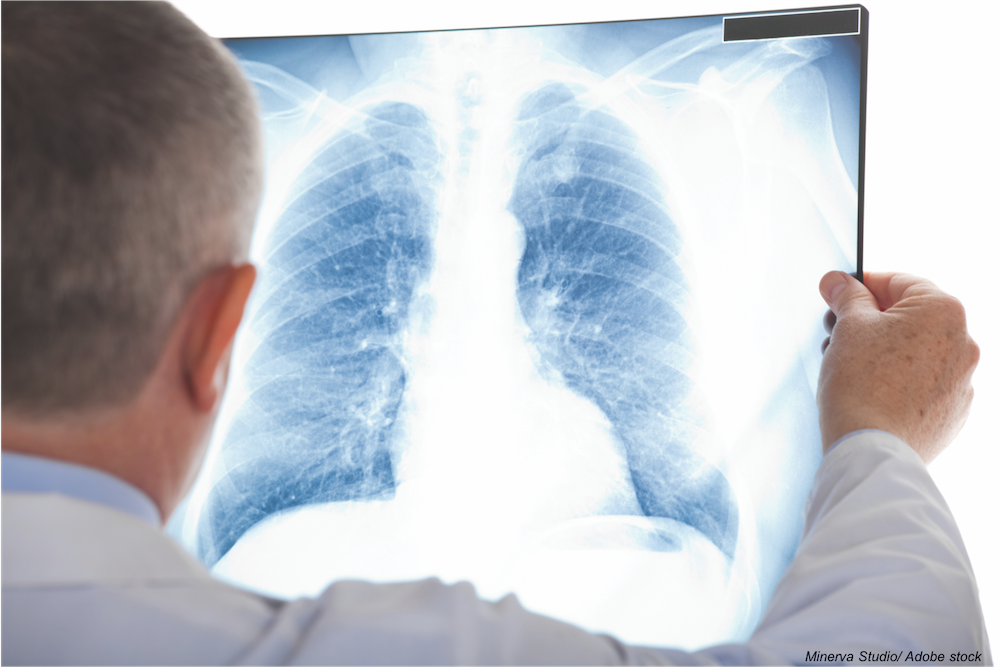Chest X-Rays Show Racial Disparity in COVID-19 Severity
Disease severity was higher among people of color hospitalized with COVID-19, according to a review of chest X-rays.

A review of chest X-rays showed that people of color hospitalized with coronavirus 2019 (COVID-19) were more likely to show increased disease severity and a higher risk of adverse outcomes such as admission to intensive care units and intubation.
The retrospective cohort study, published in the journal Radiology, offers further evidence of racial disparities in COVID-19 cases.
Investigators with Harvard Medical School and Massachusetts General Hospital reviewed the electronic medical records of 326 adults hospitalized with COVID-19, the disease caused by the novel coronavirus SARS-CoV-2, from March 27 to April 10 at Massachusetts General Hospital.
Chest X-rays on admission showed increased disease severity among non-white patients. It also found that increased disease severity was associated with delays in seeking medical attention, low English proficiency and obesity.
“Our clinical and research work has offered a sobering reality about the direct impact in health outcomes of the disparities that many vulnerable populations experience every day,” corresponding author Efren J. Flores, MD, department of radiology, Massachusetts General Hospital, told Contagion®. “Patients who have worse disease on chest X-rays have a higher likelihood of experiencing severe complications from COVID-19. This increased severity and higher risk of complications is in part to a complex multifactorial combination of socioeconomic and medical factors that disproportionately affect our minority communities and result in disparities every day; COVID has magnified these disparities.
“Furthermore, what we saw in clinical practice reading through the patients’ medical notes were many patients delayed their COVID-19 care to continue working at jobs deemed essential in order to provide for their families or due to lack of access to a clinic in their community, negatively affected their overall clinical course and severely impacted their livelihood. This is why it is very important to make care accessible and to share this information of early treatment for all patients and their communities.”
The average age of patients included in the study was 59 years, 57.7% were male, 43% had limited English proficiency and 64.4% were people of color.
Severity of disease was indicated by Modified Radiographic Assessment of Lung Edema (mRALE) scores, which were higher among non-White patients, at an average of 6.1 compared with 4.2 among white/non-Hispanic patients in the study. MRALE scores account for the extent and severity of lung opacities on chest radiographs.
The study found that 31% of white/non-Hispanic patients were admitted to the intensive care unit, compared with 40% of non-white patients. Intubation occurred in 23% of white patients and 34% of non-white patients. Supplemental oxygen was required for 78% of white patients and 73% of non-white patients, and death occurred among 23% of white patients and 9.1% of non-white patients.
“Health equity is everyone's duty,” Flores said. “Collaborations at the intersection of the healthcare system and public health are necessary to address social determinants of health and bridge the disparities gap affecting minority communities as we're seeing with COVID and other diseases.”
He noted that radiology provides insight into health disparities and evidence that minority communities have seen both a higher frequency of COVID-19 infections and greater severity of disease.
“Our purpose is to use this information to document the existing and emerging disparities, but also to use this information to guide health equity and public health efforts that are person-centered and collaborative with the community,” Flores said.
He pointed to a Respiratory Illness Clinic created at the MGH Community Health Center in Chelsea, Mass., to increase COVID-19 testing and collaborate with the Community Health Center to provide information and guidance to better serve vulnerable patients.
“Healthcare and public health sectors need to continue close collaborations to enhance equitable access to care for vulnerable populations, particularly those who live in areas that are considered ‘hot-spots.’” Flores said. “Many of the lessons learned are applicable across the country, as we see that minority communities are disproportionately being affected by COVID.”
Future efforts could focus on providing access to vaccines and treatments for COVID-19 in high-risk areas as they become available along with addressing other health issues exacerbated by the pandemic.
“Long term, we need to focus efforts in areas that are home to people who are not only hardest hit by the pandemic and other medical conditions, but also those who traditionally lack sustainable access to health care,” Flores said. “This includes geographical communities and populations that we know are most vulnerable, including Hispanic, African-American, Native American and other communities of color, individuals with serious mental illness and individuals experiencing homelessness, among others. The pandemic has compounded the risk for these individuals many aspects of routine medical care were postponed, including preventative cancer screening. We will need to ensure robust outreach in collaboration with the public health sector, in particular to the communities previously mentioned, to avoid delays in potentially life-saving care and address some of the social determinants of health that act as barriers to care.”
The study supports other research that has highlighted the disproportionate effect the pandemic has had on racial and ethnic minorities. A study of COVID-19 cases and deaths in the New Orleans area published in June found that Black Americans are more than twice as likely to be hospitalized and more than twice as likely to die from the disease.
That study followed a survey that showed African American men were at the greatest risk for COVID-19. African American survey respondents were 3.2 percentage points more likely to report COVID-19 infection than white survey respondents.
